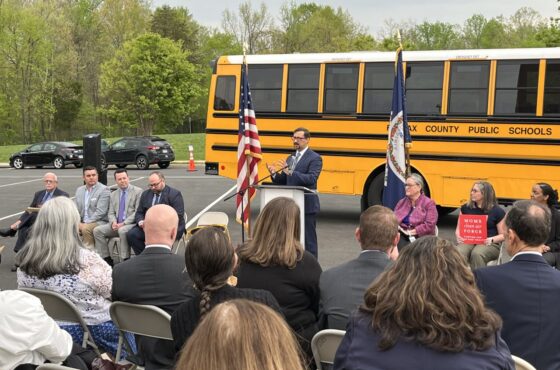India Moving Ahead Towards Climate-Friendly Cooling
Published by the Natural Resources Defense Fund
Guest blog by Karan Chouksey, NRDC India Initiative
With the Montreal Protocol meetings in full swing this week in Bangkok, countries are making progress in implementing the ground-breaking Kigali Amendment of October 2016. The Montreal Protocol—the world’s most effective environmental treaty—is continuing its work to phase out hydrochlorofluorocarbons (HCFCs) on the accelerated schedule agreed in 2007 and taking initiating steps towards phasing down hydrofluorocarbons (HFCs), the super-potent greenhouse gases used in every day air conditioning, refrigeration, and more. India is a key supporter of the Kigali Amendment and hopes to secure better air conditioning technologies to meet its growing cooling needs.
The benefits of the reduction in HFC use flowing from the Kigali amendment are huge—up to half a degree reduction in the increase in global temperatures, a major contribution towards achieving the goal of the Paris Agreement to limit future warming below 1.5-2.0˚Celsius , as my colleagues discuss here. The Kigali Amendment shows that nations can work together to curb climate change, and that people across the globe can have affordable, climate-friendly air conditioning. It will help protect families and communities already suffering from worsening drought, stronger storms and extreme heat.
Achieving this amendment required leadership and flexibility from both developed and developing economies. Implementing the amendment will require the same global cooperation, bringing industry and regulators together to continue the Protocol’s 30-year history of success.
HFCs—used mostly in air conditioning and refrigeration, for making insulating foams, and in some aerosol and other products—have hundreds to thousands of times the heat-trapping power (global warming potential, or GWP) of carbon dioxide. Though accounting for only 1-2 percent of total warming now, HFCs are the fastest growing climate pollutants because of the skyrocketing demand for air conditioning and refrigeration in developing markets such as India.
Three Main Issues to Watch for India
Financing & MLF Replenishment
The discussions are already off to a positive start with countries showing flexibility and commitment in discussing financing arrangement for the next three years. During the pre-meeting on funding under the Multilateral Fund (MLF), countries agreed to mobilize initial “enabling activities” (i.e., activities that precede preparation of national implementation plans) to support the phasedown of HFCs. This includes supporting country actions for early Kigali Amendment ratification, work on institutional arrangements and licensing systems, data reporting on HFC production and consumption, and more.
The Technological and Economic Assessment Panel (TEAP) also estimated that $602 million to $748 million in funding are needed for the time period from 2018 to 2020, mainly for continued implementation of the accelerated HCFC phase-out. These estimates include $21.5 million to $44.2 million for HFC phase-down enabling activities without taking into consideration the funding requirements of HFC phase-down enabling activities applicable to Article 5 Group 2 countries under the Kigali Amendment. Looking ahead, it is critical for the TEAP to include Group 2 countries in the replenishment for this year. India (and other countries in Group 2) can move ahead with the enabling activities projects once the MLF calls for project proposals from Group 2 countries, which we suggest should be at its first 2018 meeting.
Safety Standards
Industry and policy makers are also continuing discussions on stronger safety standards for low-GWP alternative refrigerants that are flammable. The parties and stakeholders discussed technological, financial and regulatory aspects of refrigerants testing norms and procedure. Indian industry representatives talked about risks associate with the refrigerant use, ranging from training programs to air-conditioner size. While manufacturers can assess and control equipment design and development-related risks, the major concern the industry face today is handling of risk at the consumer level. Indian industry also recognized the need for trained technician who can properly install, maintain and repair systems. At the same time, consumers need to be aware of the importance of safety requirements, and getting trained technicians to repair them.
Integrating Energy Efficiency and HFCs
A key emerging issue during the Kigali meetings and in implementation is innovation in air conditioning to achieve both more energy efficient and climate-friendlier refrigerants. In India, governments, business and stakeholders have been working to on advancing energy efficiency and adopt safer and more energy efficient refrigerants instead of HFCs. India needs more energy efficient and climate friendly air conditioners to meet its rapidly growing demand for cooling without overstressing power grids. Energy smart cooling is also needed considered the devastating impacts of climate change on vulnerable communities from massive flooding due to deadly heat waves in India and other nations.
The Indian government recently announced plans to develop a National Cooling Action Plan. The plan aims to bring together experts on the cooling industry, energy efficiency, and alternative refrigerants (low- and zero-GWP) and other stakeholders to formulate a national cooling framework. The India Ozone Cell [within] Ministry of Environment, Forest and Climate Change also announced plans to establish a national committee integrate discussions on energy efficiency and the Montreal Protocol. Later this week, NRDC and partners will present our research and findings on climate friendly and more efficient cooling. We have been engaging with leading businesses in India and internationally to understand challenges and develop solution to support climate friendly and efficient cooling.
This week’s meeting also marks the 30th Anniversary of the Montreal Protocol. India has been a vital player in the success of the Protocol from the beginning and was instrumental in achieving the Kigali Amendment. As in the past, developed countries should match that enthusiastic support for action with sufficient funding to allow developing countries to leapfrog HFCs whenever possible. In addition, funds should be made available to begin setting the stage for the full phasedown of HFCs in the coming years and innovate to more climate-friendly and efficient air conditioning.
Anjali Jaiswal, Alex Hillbrand, and David Doniger contributed to this post.
Read the full article at: https://www.nrdc.org/experts/nehmat-kaur/india-moving-ahead-towards-climate-friendly-cooling





